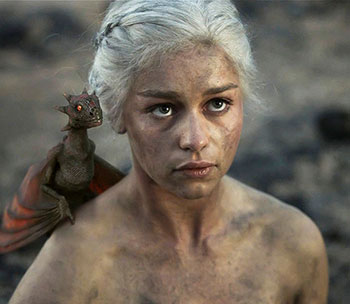How do you know what you’re looking at is of the Fantasy genre, Is there magic of some kind? Yep. Robes and medieval-style garb? Yep. An excess of men with lengthy beards and ladies with long, wispy hair and even longer gowns? Yep. While the genre has certainly splintered as its popularity has grown, the textbook definition of Fantasy is an easy one to map out in our minds. And when laying out a laundry list of characteristics, it’s often easier to just settle on one overarching characteristic: Fantasy looks like something out of J.R.R. Tolkien’s realm. But why is that How has one man’s work shaped an entire genre, and one that trades on the ability to create just about anything imaginable? Why is it that our most easily acceptable definition of the Fantasy genre involves English accents and scenes that could be plucked from the Arthurian Legend? As entertaining as it would be, the answer doesn’t come from humanity’s deep desire to find Frodo in every tale or the quest to make medieval garb so ubiquitous it comes back in the form of socially acceptable day wear. Instead, Fantasy's staid state is kind of Tolkien’s fault.For those who don’t already worship at the moss-covered altar of Tolkien, he’s widely known as the Father of Modern Fantasy. It's something that Tolkien’s one-time colleague at Oxford, Tom Shippey, confirms. “He created the genre not quite single-handedly, but very nearly so, says Shippey in a press release for his book J.R.R. Tolkien Author of the Century. "The shelves in modern bookstores would look very different if Tolkien had not written, or if Stanley Unwin had decided not to publish him after all, back in the early 1950s. The eagerness with which he was followed suggests that there was a suppressed desire for the kind of thing he did, but nobody before him quite knew how to do it, or thought it was allowed.Adding to that sentiment,Tolkien scholar and professor at Barnard College, John Pagano, says that for him, It’s impossible to look at Fantasy without seeing Tolkien as really the kind of original source.Of course, simply establishing Tolkien as the leader of the creation of Modern Fantasy doesn’t exactly answer the question of the semi-ubiquitous medieval aesthetic and content of a great deal of mainstream Fantasy. It’s a no brainer to assume that the images from Game of Thrones and to some extent, pieces of Harry Potter are going to resemble Frodo’s journey or Bilbo Baggins’ adventures in The Hobbit.But there’s no dearth of alternative aesthetics available to Fantasy writers. So why is it that robes and beards have established themselves in Western Modern Fantasy, where the Middle Eastern garb of Aladdin’s Arabian Nights or ancient garb of non-European cultures could provide visual delights just as easily, Again, we look to Tolkien, whose time at Oxford took him through the study of the Anglo-Saxon period, also known as the Middle Ages also known as the era in which the Arthurian Legend was born. And in many ways, the tale of Arthur is responsible for making the medieval aesthetic almost exotic. “There seems to be otherworldliness about medieval culture as we think of it, perhaps wrongly," says Helen Borello, who teaches Arthurian Literature at the Savannah College of Art and Design. "And when it comes down to it, I think the exaggerated qualities of some Arthurian legend lends itself to that.That goes for content as well, as both Arthur and Bilbo and Frodo, for that matter participate in the common medieval theme of the all important quest. And of course, it’s hard not to draw comparisons between Arthur’s Lady of the Lake and the royal elf Galadriel, both of whom hold significant power in both realms.Tolkien wasn't unaware of his inspiration. “He was very interested in the Arthurian legend, says Pagano. Tolkien not only studied that period in literary history, he was immersed in it. “He was somebody who was deeply in love with what he was also theoretically attempting to understand. So you have that wonderful combination of theory and practice, Pagano adds.Of course, as influential as Tolkien has proved to be, some of the responsibility falls on Western culture itself. Romances of the Middle Ages were the staple form of narrative entertainment for people for 400 years and that’s longevity there, says Pagano. That’s incredible popularity.If we are to trace the influence of those romances to fantasy as we now know it, like Tolkien did during his days at Oxford, it seems almost inevitable that the medieval romance pervades Tolkien’s genre. “If you believe that there’s a cultural unconscious the notion that you need some kind of imaginative expansion of your vision and your world and it was there with the romances in the Middle Ages, it was attempted to be recovered by the Romantics in a far more skeptical age, Pagano says. And then Tolkien came along and just tapped it in the right way and at the right time.So while the genre that is Fantasy has diversified as its profitability and availability has increased expanding beyond the Anglo Saxon inspired universe in some cases the base of the genre in the Western world is unavoidably tied to Tolkien and therefore to his extensive roots in the study of Medieval literature. Beards, quests, and wizards forever.Until the next Tolkien.
FG HBT.blogspot.com
FG HBT.blogspot.com



No comments:
Post a Comment